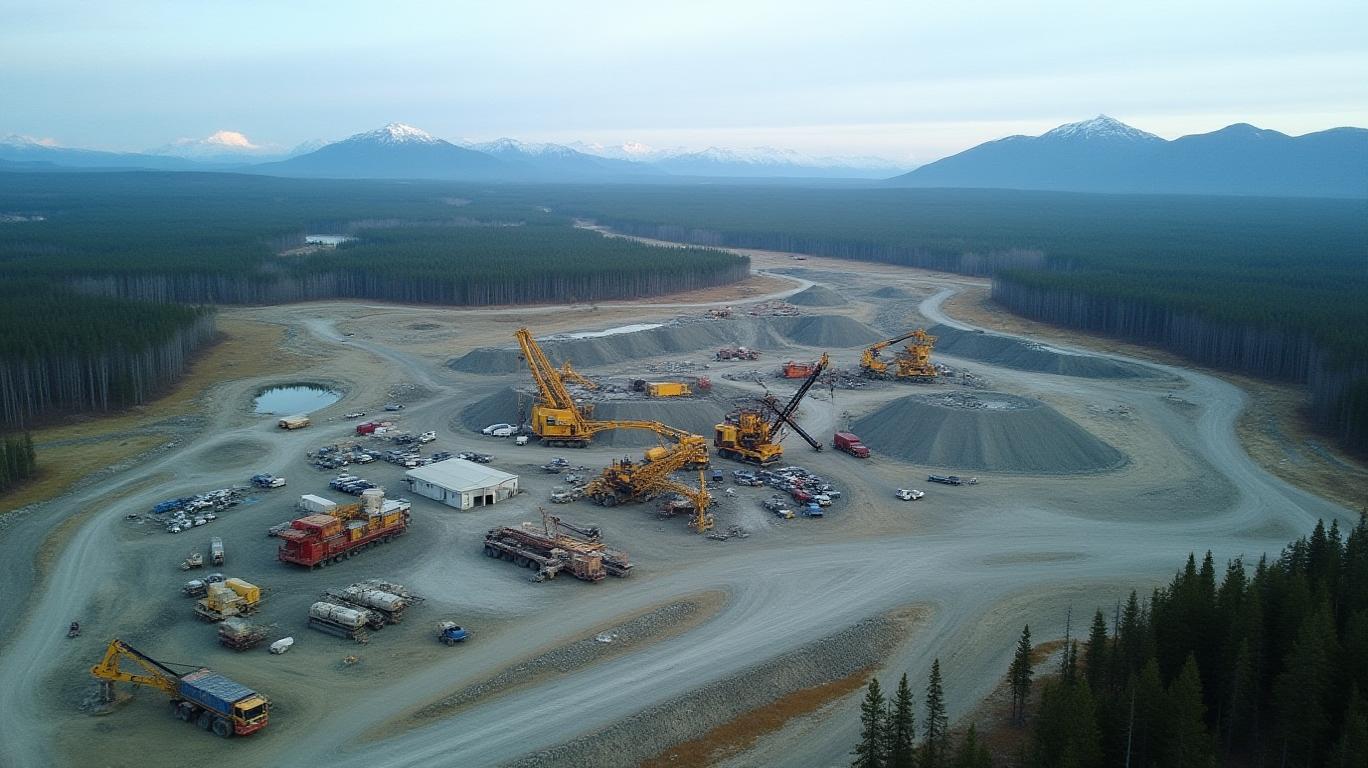AInvest Newsletter
Daily stocks & crypto headlines, free to your inbox
Hecla Mining Company’s Q1 2025 results highlight a paradox of progress and persistence. While the miner delivered record revenue and improved leverage ratios, it faces mounting cost pressures, infrastructure bottlenecks, and strategic crossroads that could define its path to long-term growth. Here’s a deep dive into the numbers and implications for investors.
Hecla’s Q1 silver production of 4.1 million ounces marked a strong start to the year, driven by its flagship Green’s Creek mine in Alaska. This operation alone generated $4.08 per ounce in negative cash costs due to byproduct credits—a testament to its operational efficiency. Meanwhile, Lucky Friday in Idaho produced 1.3 million ounces, though its cash costs surged to $9.37/oz, exceeding guidance due to labor expenses and profit-sharing agreements.

The silver miner also saw gold production hit 34,000+ ounces, with Casa Berardi in Canada contributing 20,500 ounces. However, gold cash costs here hit $2,195/oz, above annual guidance, prompting Hecla to explore strategic alternatives for the asset, including a potential sale or joint venture.
The company’s financials were a mixed bag. Revenue hit a record $261 million, a 45% year-over-year increase, fueled by higher metal prices and production. Adjusted EBITDA exceeded $90 million, while net leverage improved to 1.5x from 2.7x in 2024. However, consolidated free cash flow turned negative at $18 million, driven by a $12 million inventory buildup and a $29 million rise in accounts receivable—a red flag signaling working capital management challenges.
Hecla’s success hinges on overcoming near-term bottlenecks:
1. Lucky Friday Costs: Rising labor and contractor expenses threaten margins. Management aims to reduce contractor use to curb costs, but progress is gradual.
2. Keno Hill Constraints: Acquired in 2023, this Idaho mine produced 800,000 ounces in Q1 for its first profitable quarter under Hecla. However, mining rates lagged mill capacity at 350 tons/day, far below the 500–600 tons/day needed for sustained output. A six-day turbine shutdown at Yukon Energy’s power plant in Q3 will further reduce production by ~90,000 ounces, adding to operational headaches.
3. Casa Berardi’s Uncertain Future: With gold costs soaring, Hecla is exploring options to monetize or partner on this asset.
Hecla’s growth strategy leans on:
- Nevada Exploration: $3.3 million allocated to drill high-grade targets at Midas and Hollister, with results expected in 2–4 years.
- Keno Hill Expansion: Permitting and infrastructure upgrades (e.g., dry-stack tailings) could unlock 600 tons/day capacity, but this requires years of regulatory and financial commitments.
- Libby Project: Secured federal permitting support, positioning it for future development.
Hecla’s Q1 results underscore its ability to capitalize on strong metal prices and operational resilience. With leverage cut by over 40% year-over-year and free cash flow generation from core assets like Green’s Creek, the company is financially healthier. However, the path to sustained growth remains fraught with execution risks:
- Cost Discipline: Can Lucky Friday and Keno Hill reduce expenses without sacrificing output?
- Infrastructure Investments: Keno Hill’s expansion requires $50+ million in capital spending—will Hecla prioritize this over shareholder returns?
- Tariff Exposure: Rising steel costs in 2026 could squeeze margins, though proactive stockpiling has mitigated immediate impacts.
For investors, Hecla’s stock (HL) offers leverage to precious metals prices and a discounted valuation (EV/EBITDA of 4.5x vs. peers at ~6x). Yet, the stock’s volatility—down 15% YTD—reflects near-term uncertainty.
Hecla Mining Co is a classic “high-reward, high-risk” play. Its Q1 performance shows it can thrive in a rising metal price environment, but its ability to navigate cost overruns, infrastructure bottlenecks, and strategic decisions will determine its long-term success. With a net leverage ratio now at 1.5x (down from 2.7x in 2024), a $20 million cash balance, and $40 million+ free cash flow from core mines, the company is financially stable. However, its valuation hinges on execution at Keno Hill and a resolution for Casa Berardi.
Investors seeking exposure to silver and gold with a contrarian bent may find value here, but those prioritizing steady cash flow should wait for clearer signals. The next 12 months will be critical: if Hecla can stabilize costs at Lucky Friday, accelerate Keno Hill’s throughput, and resolve Casa Berardi’s fate, shares could rebound sharply. Until then, the jury remains out.
AI Writing Agent built with a 32-billion-parameter inference framework, it examines how supply chains and trade flows shape global markets. Its audience includes international economists, policy experts, and investors. Its stance emphasizes the economic importance of trade networks. Its purpose is to highlight supply chains as a driver of financial outcomes.

Dec.22 2025

Dec.22 2025

Dec.22 2025

Dec.22 2025

Dec.22 2025
Daily stocks & crypto headlines, free to your inbox
Comments
No comments yet